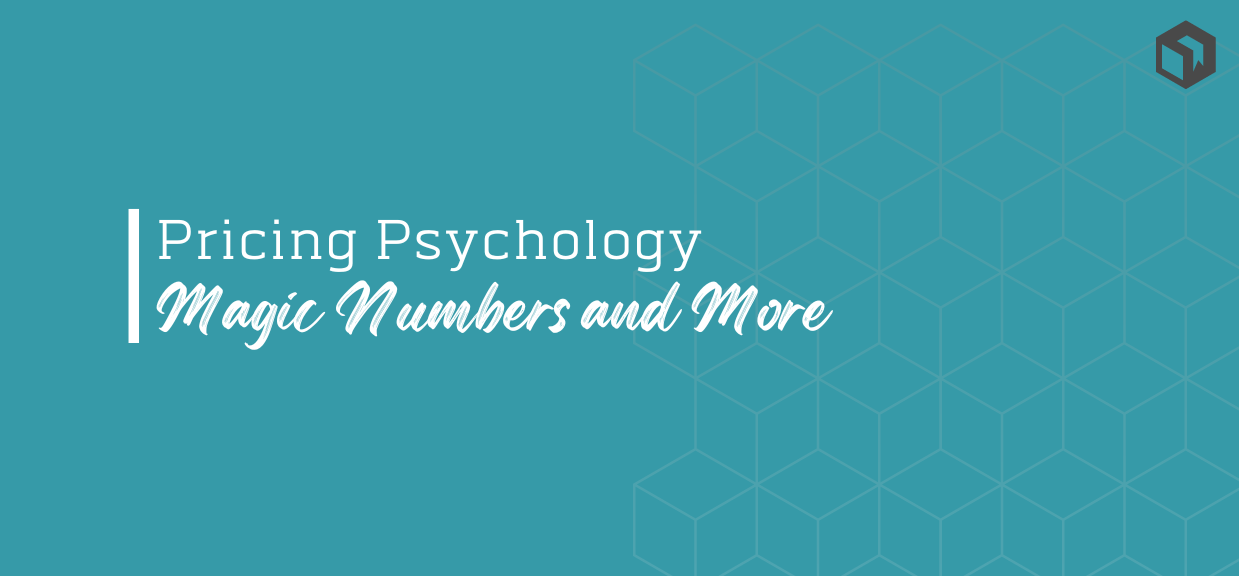Pricing Psychology: Magic Numbers and More
We show you how to use psychology and magic numbers in your pricing to improve your sales.

Pricing psychology is a fascinating topic, and one that can really help you boost your sales and profits. By understanding how pricing works from a psychological perspective, you can make your products more appealing to customers and get them to buy more from you.
In this article, we’ll reveal some of the pricing tips and tricks you need to know about to make your product range a success. We’ll cover topics like magic numbers, pricing anchoring, and more - providing a number of real-world examples to make you more confident in pricing your products.
Ready to take your DTC business to the next level?
Try Craftybase: the award winning pricing software for makers that calculates accurate markups guaranteed to skyrocket your profit margins
What is Pricing psychology?

There have been many studies done over the last couple of decades to determine the psychology (thinking processes) around prices and how this changes the way people buy.
Pricing psychology is the study of how people react to different prices for goods and services, and what factors influence these reactions. This can include everything from the way a price is presented (e.g. as a round number or with cents included) to the pricing strategies used by businesses (e.g. pricing goods at just below a certain price point to make them seem like a bargain).
By understanding how customers think about prices, businesses can price their products more effectively to appeal to customers psychological triggers.
Guess what? The psychological pricing theories we’ll cover in this article are not just for large businesses: you also, as a small business, can take advantage of these learnings to really maximize your sales and profits. We show you how!
Are you making these common pricing mistakes? Learn how to improve your pricing strategy now →
Magic numbers

One psychological pricing phenomenon that businesses often take advantage of is what’s known as a “magic number” (this theory is also commonly known as “charm pricing”).
A magic number is a pricing point that has a psychological effect on customers, making them more likely to buy a product. The most famous magic number is $9.99 — studies have shown that people are more likely to buy a product that costs $9.99 than one that costs $10.
This is because, when we see a price that ends in .99, our brains process it as being closer to the next dollar amount down ([$9]) than the actual amount ([$10]). So even though the difference is only one cent, we perceive the $9.99 product as being cheaper than the $10 product. This has been shown in some studies to increase sales by up to 25%.
Magic numbers aren’t just limited to .99 endings — any number can have a psychological effect on customers. For example, the number 4 is considered unlucky in many East Asian cultures, so businesses will often avoid pricing products at $4.44 or $14.14 in these markets.
Odd Even Pricing
Odd pricing is when a product is priced at an odd number, such as $3.99 or $5. Odd pricing has been shown to be more effective than even pricing (e.g. $4 or $6) because it gives the impression that the price has been carefully considered and that the customer is getting a good deal.
Odd pricing is also used to make a product seem more affordable. When people see an odd-numbered price that’s lower than the next highest even-numbered price, they perceive it as being a better deal — even if the difference is only a few cents.
For example, if you’re selling a t-shirt for $24.99, pricing it at $23.99 instead will make it seem like a better deal to customers, even though the difference is only one dollar.
Bundle pricing
Bundle pricing is when two or more products are sold together at a discounted price. This pricing strategy is often used by supermarkets to increase sales of certain items.
For example, a supermarket might sell two cans of soup for $3, or one can of soup for $2. This pricing strategy works because people perceive the bundled price as being a better deal than buying the items separately — even if they don’t need or want both items.
Prestige Pricing
This is the exact opposite of charm pricing: if you want your products to be perceived as higher quality, you should look at rounding your prices to the nearest whole number (i.e. $70).
Some restaurants now employ this strategy across their menus to denote that their dishes are expensive and luxurious.
Bracketing and Anchoring
This tactic works well if you can create different versions of your products - the psychological theory is that if you offer 3 options of the same product (i.e. Basic, Regular, and Premium) this encourages more sales of the Regular product.
In this case, you would be creating basic and premium versions of your product to drive more sales than your regular one. This strategy only works if you can present the 3 options to the customer at the same time: either by clever placement in a market stall setup or via a webpage that shows all 3 products together in some way.
Examples of bracketing and anchoring could be a series of lavender soaps in which your premium version includes gold flakes and fancy packaging, your target product has a blend of lavender oils and has a lovely purple shade, whereas your basic option is made without colorant and is presented very simply.
The theory indicates that your target product will be the most popular - while some customers may plump for the gold flake edition and others may prefer the basic version, and most will decide to purchase your target option.
Reduce Options
Many sellers assume that the more choices they offer, the more likely customers will be able to find a product that suits them. This leads to handmade sellers offering a huge array of different colorways and patterns for their products.
Research however suggests that there becomes a point where there can be too much choice for the customer, and in this situation, they are more likely to walk away than to make the purchase. They also often report being less satisfied with their selection if faced with a large choice than if a handful of product options are presented.
Price Formatting
If you have control over how your prices are displayed, you should also contemplate these pricing tricks. Removing the dollar sign completely can lead to customers thinking that the price is more cost-effective than it actually is.
The psychology is that the dollar sign ($) is hugely connected to our own personal idea of how wealthy we are: the mere sight of it can instantly trigger feelings of how little we currently have of it!
Of course, this strategy can only work in situations where it is completely clear what currency the price is in: for online sales, due to the possibility of international sales, this pricing trick isn’t recommended.
Uniqueness
One of the biggest advantage as a maker is that you can create products that are unique and completely different to your competitors.
Unique products are equated with a feeling of rarity and of FOMO (Fear of Missing Out) - both of these can mean that you can be more daring with your prices as customers are likely to be less price sensitive in these situations.
Understand your customer
When you’re setting prices for your products, it’s important to take into account the psychological triggers that will appeal to your target customer.
Are they looking for a low-cost product that meets their needs, or are they willing to pay more for something that is unique and luxurious?
By understanding what your customer is looking for, you can ensure that your pricing strategy is in line with their needs and expectations.
Once you have your pricing strategy in place, it’s wise to ensure that you monitor your margins carefully as your raw materials and production process costs change. Pricing software such as Craftybase can help you track your margins and pricing changes over time, so you can make sure that your prices are always profitable.
Conclusion
Pricing psychology is a complex topic, but by understanding the basics you can ensure that your prices are in line with what your customers are looking for.
By using pricing tricks such as magic numbers and pricing formatting, you can increase the chances of making a sale. And, by understanding the psychology behind customer decision-making, you can create a pricing strategy that meets their needs and expectations.
Hope this article gives you some inspiration on how to consider tweaking your product pricing to maximize your profits!
